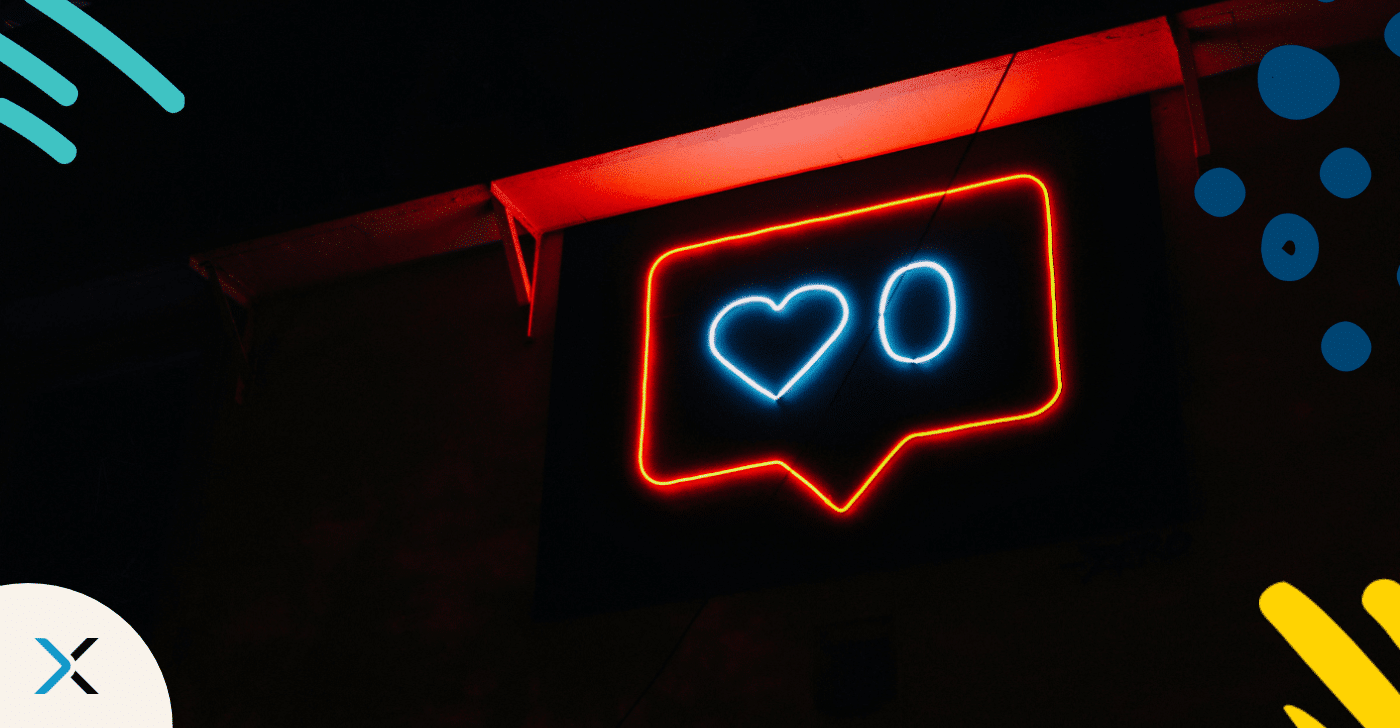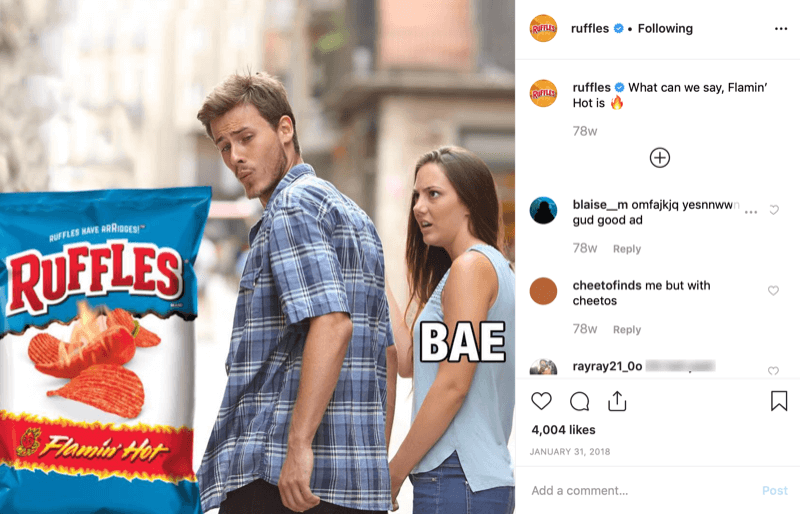
Social media has made a huge impact on our everyday lives, from the speed at which we communicate to the spread of information. Whether you use it in a personal or professional capacity, social networks like X, Instagram, Facebook (and Facebook Messenger), TikTok, LinkedIn, and YouTube have become a part of people’s lives.
One of the single most important effects has to be how it has changed language. From introducing new words such as “photobomb,” and acronyms like FOMO (fear of missing out), social media has changed the way we write and speak. Of course, there’s one question we need to ask: Is social media wreaking havoc on the way we write or actually helping us do it better?
The English language is evolving faster than ever
A huge amount of the written language we encounter is on our computers, smartphones, and tablets. We use X, Facebook, and WhatsApp to connect with people and catch up on news. We use Instagram and Snapchat for photo-sharing and to consume visual updates. We use YouTube for video-sharing and watching. We use LinkedIn to share professional updates and find new jobs. So it’s no surprise that the evolution of language is happening through our interactions with technology.
Words and phrases have been coined on social media and have since passed into general usage, and even our dictionaries. “Selfie,” for example, was named word of the year by the Oxford English Dictionary in 2013. Two years later, their “word” of the year was the “tears of joy emoji,” which is further proof of how language is evolving thanks to social media platforms.
ICYWW, here’s what’s changed
Acronyms enter our language every day. (Oh, and if that last one had you scratching your head, it’s short for “in case you were wondering.”) But not all stick around long enough to make an impact. LOL and OMG have stood the test of time, but early texting hits like GR8 and M8 have almost completely lapsed into obscurity. Photobomb, that relatively new compound noun we mentioned earlier, seems to be finding a permanent home in the English vernacular.
Social media hasn’t just invented new words. It’s also transformed the meaning of existing ones. “Friend” is no longer just a noun that means companion. Thanks to the Internet, it’s now a verb meaning “to friend someone on Facebook.” Likewise, if someone mentions a troll, they’re far more likely to be referring to someone harassing people under an Instagram post or online than an odd creature living under a bridge.
With the rise of TikTok (which has around one billion monthly active users), lip-syncs have also become popular. Whether that’s to the latest episode of a popular TV show or a song that’s popularized by a TikTok influencer who creates a new dance. This adds to the ever-changing landscape of language that’s used across different social media platforms. Social media platforms provide space for their audiences to get creative and explore new ways to use and engage with language.
How social media is shaping informal writing and communication
Informal writing has become a key part of modern communication, especially with the rise of quick, casual, and conversational interactions on platforms like Twitter, Instagram and forums such as Reddit. Much of this shift toward informal writing has developed out of a need to communicate quickly, often within strict character limits, such as Twitter’s original 140-character cap. While some may argue that the younger generation’s creative use of language is problematic, this evolution of language is far from a cause for concern.
English is a living language constantly evolving, and informal writing is a prime example of how it changes with time. Just as terms like “voicemail” and “shopaholic” were once considered new and now feel like everyday words, social media language—like acronyms such as “IMHO” (in my humble opinion) and “TL;DR” (too long; didn’t read)—is gradually being integrated into mainstream communication. These words and phrases, once confined to digital spaces, are now becoming part of our daily vocabulary, making informal writing richer and more dynamic.
As informal writing continues to shape how we communicate, it’s clear that this style is the go-to for quick communication. While formal writing still plays a crucial role in business and academic contexts, incorporating informal writing in casual settings reflects our adaptability and responsiveness to the evolving language landscape. Rather than rejecting the new style, embracing it selectively can help us connect more effectively, making our language faster and more relatable. Social media is far from “ruining” our writing, maybe enriching it, bringing new ways to express ourselves in a more engaging and accessible manner.
How brands are using informal writing to connect with people
There’s no doubt that informal writing also influences social media marketing. Companies have always tried to use social media to their advantage. Ranging from advertising e-commerce products, responding to customer queries, or creating a community-based following of loyal brand advocates. And this means creating content in the same language as social media users.
Take this Ruffles social media marketing campaign:
It combines three elements of social media speak: memes, acronyms, and emojis. Let’s break down what it all means and why it’s successful at connecting with a social media audience:
- Meme: Popular on social networks like Instagram, X, and Facebook, memes capture humorous current phenomenons or themes that are then spread across the internet taking on user-generated variations. Ruffles created a funny variation of this popular meme to suggest their chips are desirable. By using a meme their audience finds entertaining, Ruffles is demonstrating that they understand their customers and want to engage with them in a fun way.
- Acronym: This campaign uses the acronym BAE (before anyone else) which often refers to a girlfriend, boyfriend, or best friend. This is a classic example of how brands use their social media marketing strategy to connect with their audience. Talking in the language of active users helps brands to create relationships with their prospects and customers, while at the same time being memorable.
- Emoji: Using the fire emoji allows Ruffles to limit the number of words they’re using while enhancing the meaning of their message. The emoji both references their “flaming hot” chip flavor and taps into the social media usage of the emoji to symbolize something as cool and exciting. It also helps grab the user’s attention by helping to break up the text.
Social media marketing meets brand audiences where they socialize and scroll. So that means researching the social media platforms that your target audience uses. Lots of companies choose to advertise on Facebook as it has almost three billion monthly active users. But if you’re trying to catch the attention of a young audience, you might want to prioritize platforms like TikTok and Instagram, or if you’re selling a B2B solution, LinkedIn is your best chance of reaching your prospects and customers.
Whatever your target audience, social media presents lots of opportunities for you to demonstrate your brand personality, reveal insights into your brand (through behind-the-scenes posts), and drive conversions. But you can really take informal writing to the next level when you combine it with a brand tone of voice.
Balancing informal and formal writing in the social media era
The rise of social media has fundamentally transformed how we communicate, with informal writing becoming a dominant force in modern language. This shift toward more casual, efficient forms of communication is inevitable and beneficial in many ways. Informal writing allows for faster, more relatable interactions, especially in digital spaces like social media, emails, and text messages. Acronyms, slang, and emojis have become integral to everyday language, showing that informal writing has adapted to the speed and tone of the digital world. While some may resist this change, it’s essential to recognize that language constantly evolves, and informal writing is simply the next step in that process.
At the same time, it’s crucial to maintain a balance between informal writing and more formal communication. Both have their place and mastering each is essential for effective communication in different contexts. As we continue to embrace the fluidity of language, the ability to switch between casual and formal writing will only enhance our adaptability and communication skills. In the end, social media and “social speak” have enriched how we express ourselves, making language more accessible, engaging, and dynamic in the digital age.
Using informal writing to achieve a casual tone of voice
Any company looking to connect with customers and prospects through social media needs to harness the power of informal writing. But — how you use informal writing should be guided by your brand tone of voice. Are you laid back and chatty, or direct and punchy? The way you express yourself as a brand can have a big impact on the customers you attract and help drive meaningful connections with those customers.
The problem is that a lot of brands don’t really know what their tone of voice is, let alone have defined it and in use across the company. But the good news is that we’re here to help you! Our Tone of Voice Workbook gives you the tools you need to create and define a tone of voice that matches your brand personality. With helpful examples, worksheets, and exercises, you’ll have your brand tone of voice defined in no time. Download it today, or if you’re interested in learning how Acrolinx can help your brand create impactful content, let’s talk.
Frequently asked questions
“Hey there! Just wanted to give you a heads-up — your invoice is ready.” Acrolinx can highlight such tone deviations in professional content.
Formal writing uses structured, precise language suitable for professional contexts. Informal writing is casual and conversational. Acrolinx helps teams adapt tone to audience and purpose.
It includes contractions, colloquialisms, and direct address. While informal writing is typically well suited for marketing content, there are contexts that require more formal language.
Phrases like “kinda,” “gonna,” or “check this out!” are informal. Acrolinx highlights and suggests revisions where such a tone is out of alignment with enterprise standards.
Are you ready to create more content faster?
Schedule a demo to see how content governance and AI guardrails will drastically improve content quality, compliance, and efficiency.
The Acrolinx Team






